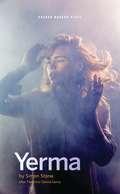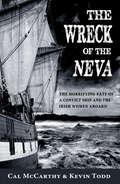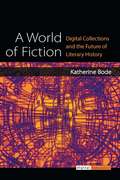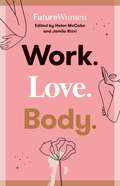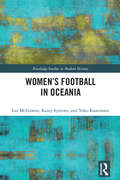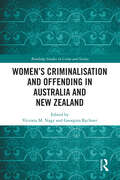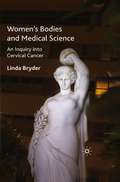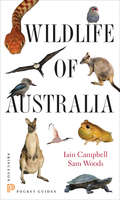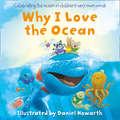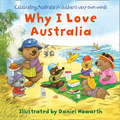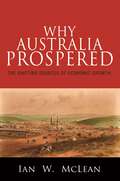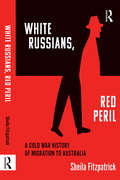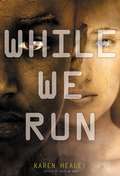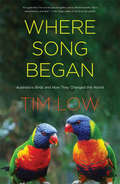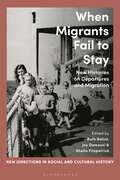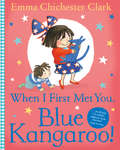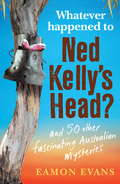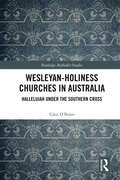- Table View
- List View
Yerma (Oberon Modern Plays)
by Federico García Lorca Simon Stone"Well we’ve got three floors right. Plenty of room… Room for a children’s bedroom. Room for two."London, the present day. A woman is driven to the unthinkable by her desperate desire to have a child.Written and directed by Simon Stone, this radical new version of Lorca’s tragedy of yearning and loss won universal critical acclaim when it premiered at the Young Vic in July 2016. Yerma triumphed at the 2017 Olivier Awards, with the production winning Best Revival, and Piper winning Best Actress. She also won the Evening Standard Natasha Richardson Award for Best Actress. Maureen Beattie, Brendan Cowell, John MacMillan and Charlotte Randle received unanimous praise for their performances.
The Wreck of the Neva: The Horrifying Fate of a Convict Ship and the Women Aboard
by Cal McCarthy Kevin ToddThe 'Neva' sailed from Cork on 8 January 1835, destined for the prisons of Botany Bay. There were 240 people on board, most of them either female convicts or the wives of already deported convicts, and their children. On 13 May 1835 the ship hit a reef just north of King's Island in Australia and sank with the loss of 224 lives - one of the worst shipwrecks in maritime history. The authors have comprehensively researched sources in Ireland, Australia and the UK to reconstruct in fascinating detail the stories of these women. Most perished beneath the ocean waves, but for others the journey from their poverty stricken and criminal pasts continued towards hope of freedom and prosperity on the far side of the world. At a time when Australia is once again becoming a new home for a generation of migrating Irish, it is appropriate that the formative historical links between the two countries be remembered.
A World of Fiction: Digital Collections and the Future of Literary History (Digital Humanities)
by Katherine BodeDuring the 19th century, throughout the Anglophone world, most fiction was first published in periodicals. In Australia, newspapers were not only the main source of periodical fiction, but the main source of fiction in general. Because of their importance as fiction publishers, and because they provided Australian readers with access to stories from around the world—from Britain, America and Australia, as well as Austria, Canada, France, Germany, New Zealand, Russia, South Africa, and beyond—Australian newspapers represent an important record of the transnational circulation and reception of fiction in this period. Investigating almost 10,000 works of fiction in the world’s largest collection of mass-digitized historical newspapers (the National Library of Australia’s Trove database), A World of Fiction reconceptualizes how fiction traveled globally, and was received and understood locally, in the 19th century. Katherine Bode’s innovative approach to the new digital collections that are transforming research in the humanities are a model of how digital tools can transform how we understand digital collections and interpret literatures in the past.
Work. Love. Body.: Future Women
by Jamila Rizvi Helen McCabeIn 2020, the lives of Australian women changed irrevocably. With insight, intelligence and empathy, Jane Gilmore, Santilla Chingaipe and Emily J. Brooks explore this through the lenses of work, love and body, and ask: Will the Australia of tomorrow be more equal than the one we were born into? Or will women and girls remain left behind?While our country was shrouded in smoke in the early months of 2020, Australian women went about their daily business. They worked, studied, cleaned, did school runs, made meals. And they postponed looking after themselves because life got in the way.Then, in March, Australians were told to lock down. For all the talk of equality, it was primarily women who held the health of our communities in their hands as they took on the essential jobs to care, to nurse and to teach, despite an invisible danger. One year later, women across the country would march on behalf of those who were not safe in workplaces and their own homes.Never before has change been thrust so abruptly on modern Australian women - 2020 impacted our working lives, relationships and our health and wellbeing. And as a growing number of women agitate for change, it is time to demand what women want. So where do we go from here?One thing is very clear: the future is now, and it is female.
Women’s Football in Oceania (Routledge Studies in Modern History)
by Lee McGowan Kasey Symons Yoko KanemasuThis book presents the most comprehensive mapping and analysis of women’s football in Oceania and is the first to examine the game’s historical development alongside social, political and cultural issues, weaving origin stories with players’ day-to-day challenges. Alongside presentation of the contemporary state of play and its overarching narrative of women’s game in the region, the book highlights key issues, discusses established and emergent themes, examines relevant contexts, investigates the status of the game at local and national levels and lays foundations for further research. Its primary objective is to detail and illustrate the historical, social, and organisational development of the women’s game, including international tournaments, national competitions, and teams in an effort to amplify the efforts of the individuals that made or make a significant contribution to the game. It draws on extensive formal and informal discussion, realises insight, proposes the means and related fields of further investigation and generates new knowledge alongside the uncovering of old. Women’s Football in Oceania covers key events, actors and moments and fills a gap in research for scholars of sports history and women’s history.
Women’s Football in Oceania (Routledge Studies in Modern History)
by Lee McGowan Kasey Symons Yoko KanemasuThis book presents the most comprehensive mapping and analysis of women’s football in Oceania and is the first to examine the game’s historical development alongside social, political and cultural issues, weaving origin stories with players’ day-to-day challenges. Alongside presentation of the contemporary state of play and its overarching narrative of women’s game in the region, the book highlights key issues, discusses established and emergent themes, examines relevant contexts, investigates the status of the game at local and national levels and lays foundations for further research. Its primary objective is to detail and illustrate the historical, social, and organisational development of the women’s game, including international tournaments, national competitions, and teams in an effort to amplify the efforts of the individuals that made or make a significant contribution to the game. It draws on extensive formal and informal discussion, realises insight, proposes the means and related fields of further investigation and generates new knowledge alongside the uncovering of old. Women’s Football in Oceania covers key events, actors and moments and fills a gap in research for scholars of sports history and women’s history.
Women’s Criminalisation and Offending in Australia and New Zealand (Routledge Studies in Crime and Society)
by Victoria M. Nagy Georgina RychnerWomen’s Criminalisation and Offending in Australia and New Zealand offers new research and analysis of women’s offending and criminalisation in Australia and New Zealand from British settlement through to the late twentieth/early twenty-first centuries. Drawing attention to women as offenders as understood in a multitude of ways, this collection highlights how women have been involved with crime and criminal behaviour, their treatment inside and outside of courts and prisons, and how women’s deviation from societal norms have attracted negative attention throughout the decades. For Aboriginal and Māori women especially, the responses were harsher than what they could be for non-indigenous women. The chapters cover a broad range of transgressions that women have been actively involved with, including theft, drug and alcohol abuse and offences, organised crime, and homicide, as well as how women’s behaviour and their bodies have been criminalised and responded to by authorities. What this collection demonstrates is that women have often chosen to be involved with crime and criminality, while on other occasions their behaviour, innocent as it was, was not considered acceptable by contemporaries, resulting in confusion and misapprehension of women who refused to fit a mould. Women’s Criminalisation and Offending in Australia and New Zealand brings together historical and criminological methods, theories, and scholars to shed light on how Australia and New Zealand’s colonial, later state, and national governments have sought to understand, control, and punish women. This collection will be of interest and value to scholars, students, and everyone with an interest in criminology, history, law, sociology, Indigenous studies, and Australian and New Zealand studies.
Women’s Criminalisation and Offending in Australia and New Zealand (Routledge Studies in Crime and Society)
Women’s Criminalisation and Offending in Australia and New Zealand offers new research and analysis of women’s offending and criminalisation in Australia and New Zealand from British settlement through to the late twentieth/early twenty-first centuries. Drawing attention to women as offenders as understood in a multitude of ways, this collection highlights how women have been involved with crime and criminal behaviour, their treatment inside and outside of courts and prisons, and how women’s deviation from societal norms have attracted negative attention throughout the decades. For Aboriginal and Māori women especially, the responses were harsher than what they could be for non-indigenous women. The chapters cover a broad range of transgressions that women have been actively involved with, including theft, drug and alcohol abuse and offences, organised crime, and homicide, as well as how women’s behaviour and their bodies have been criminalised and responded to by authorities. What this collection demonstrates is that women have often chosen to be involved with crime and criminality, while on other occasions their behaviour, innocent as it was, was not considered acceptable by contemporaries, resulting in confusion and misapprehension of women who refused to fit a mould. Women’s Criminalisation and Offending in Australia and New Zealand brings together historical and criminological methods, theories, and scholars to shed light on how Australia and New Zealand’s colonial, later state, and national governments have sought to understand, control, and punish women. This collection will be of interest and value to scholars, students, and everyone with an interest in criminology, history, law, sociology, Indigenous studies, and Australian and New Zealand studies.
Women's Bodies and Medical Science: An Inquiry into Cervical Cancer (Science, Technology and Medicine in Modern History)
by L. BryderAn analysis of a scandal involving a doctor accused of allowing a number of women to develop cervical cancer from carcinoma in situ as part of an experiment he had been conducting since the 1960s into conservative treatment of the disease, to more broadly explore dramatic changes in medical history in the second half of the twentieth century.
Wildlife of Australia
by Iain Campbell Sam WoodsIdeal for the nature-loving traveler, Wildlife of Australia is a handy photographic pocket guide to the most widely seen birds, mammals, reptiles, amphibians, and habitats of Australia. The guide features more than 400 stunning color photographs, and coverage includes 350 birds, 70 mammals, 30 reptiles, and 16 frogs likely to be encountered in Australia's major tourist destinations. Accessible species accounts are useful for both general travelers and serious naturalists, and the invaluable habitat section describes the Australian bush and its specific wildlife. Animal species with similar features are placed on the same plates in order to aid identification. Wildlife of Australia is an indispensable and thorough resource for any nature enthusiast interested in this remarkable continent. Easy-to-use pocket guide More than 400 high-quality photographs Accessible text aids identification Habitat guide describes the Australian bush and its specific wildlife Coverage includes the 350 birds, 70 mammals, 30 reptiles, and 16 frogs most likely to be seen on a trip around Australia
Wife
by Samuel Adamson- And your husband forgave you. But what did you do? Decided that forgiveness was offensive and walked out on your marriage. With nothing. Into nothing.- Into everything, I think.It's 1959. Robert leaves Ibsen's A Doll's House outraged by its attack on the sanctity of marriage; his wife Daisy dashes round to the stage door, in love with both Nora and the actress who plays her, thrilled by their promise of escape.Daisy is at the crossroads. Her moral compass tells her to go one way, society the other. What she chooses to do next will have consequences not just for her and Robert, but for four couples who come after them over ninety years.The truth is we have to give up parts of ourselves if we want to be with someone. And what if, before you know this, you run away from the wrong person?Samuel Adamson's Wife premiered at the Kiln Theatre, London, in May 2019.
Why I Love the Ocean
by Daniel HowarthFeaturing children’s own words along with heart-warming pictures, this book is a perfect celebration of all that’s special about the ocean!
Why I Love Australia
by Daniel HowarthFeaturing children’s own words and heart-warming pictures, this board book, this is the perfect book for children living in, or visiting Australia.
Why Australia Prospered: The Shifting Sources of Economic Growth
by Ian W. McleanThis book is the first comprehensive account of how Australia attained the world's highest living standards within a few decades of European settlement, and how the nation has sustained an enviable level of income to the present. Why Australia Prospered is a fascinating historical examination of how Australia cultivated and sustained economic growth and success. Beginning with the Aboriginal economy at the end of the eighteenth century, Ian McLean argues that Australia's remarkable prosperity across nearly two centuries was reached and maintained by several shifting factors. These included imperial policies, favorable demographic characteristics, natural resource abundance, institutional adaptability and innovation, and growth-enhancing policy responses to major economic shocks, such as war, depression, and resource discoveries. Natural resource abundance in Australia played a prominent role in some periods and faded during others, but overall, and contrary to the conventional view of economists, it was a blessing rather than a curse. McLean shows that Australia's location was not a hindrance when the international economy was centered in the North Atlantic, and became a positive influence following Asia's modernization. Participation in the world trading system, when it flourished, brought significant benefits, and during the interwar period when it did not, Australia's protection of domestic manufacturing did not significantly stall growth. McLean also considers how the country's notorious origins as a convict settlement positively influenced early productivity levels, and how British imperial policies enhanced prosperity during the colonial period. He looks at Australia's recent resource-based prosperity in historical perspective, and reveals striking elements of continuity that have underpinned the evolution of the country's economy since the nineteenth century.
Why Australia Prospered: The Shifting Sources of Economic Growth
by Ian W. McleanThis book is the first comprehensive account of how Australia attained the world's highest living standards within a few decades of European settlement, and how the nation has sustained an enviable level of income to the present. Why Australia Prospered is a fascinating historical examination of how Australia cultivated and sustained economic growth and success. Beginning with the Aboriginal economy at the end of the eighteenth century, Ian McLean argues that Australia's remarkable prosperity across nearly two centuries was reached and maintained by several shifting factors. These included imperial policies, favorable demographic characteristics, natural resource abundance, institutional adaptability and innovation, and growth-enhancing policy responses to major economic shocks, such as war, depression, and resource discoveries. Natural resource abundance in Australia played a prominent role in some periods and faded during others, but overall, and contrary to the conventional view of economists, it was a blessing rather than a curse. McLean shows that Australia's location was not a hindrance when the international economy was centered in the North Atlantic, and became a positive influence following Asia's modernization. Participation in the world trading system, when it flourished, brought significant benefits, and during the interwar period when it did not, Australia's protection of domestic manufacturing did not significantly stall growth. McLean also considers how the country's notorious origins as a convict settlement positively influenced early productivity levels, and how British imperial policies enhanced prosperity during the colonial period. He looks at Australia's recent resource-based prosperity in historical perspective, and reveals striking elements of continuity that have underpinned the evolution of the country's economy since the nineteenth century.
Why Australia Prospered: The Shifting Sources of Economic Growth (The Princeton Economic History of the Western World #43)
by Ian W. McLeanThis book is the first comprehensive account of how Australia attained the world's highest living standards within a few decades of European settlement, and how the nation has sustained an enviable level of income to the present. Why Australia Prospered is a fascinating historical examination of how Australia cultivated and sustained economic growth and success. Beginning with the Aboriginal economy at the end of the eighteenth century, Ian McLean argues that Australia's remarkable prosperity across nearly two centuries was reached and maintained by several shifting factors. These included imperial policies, favorable demographic characteristics, natural resource abundance, institutional adaptability and innovation, and growth-enhancing policy responses to major economic shocks, such as war, depression, and resource discoveries. Natural resource abundance in Australia played a prominent role in some periods and faded during others, but overall, and contrary to the conventional view of economists, it was a blessing rather than a curse. McLean shows that Australia's location was not a hindrance when the international economy was centered in the North Atlantic, and became a positive influence following Asia's modernization. Participation in the world trading system, when it flourished, brought significant benefits, and during the interwar period when it did not, Australia's protection of domestic manufacturing did not significantly stall growth. McLean also considers how the country's notorious origins as a convict settlement positively influenced early productivity levels, and how British imperial policies enhanced prosperity during the colonial period. He looks at Australia's recent resource-based prosperity in historical perspective, and reveals striking elements of continuity that have underpinned the evolution of the country's economy since the nineteenth century.
"White Russians, Red Peril": A Cold War History of Migration to Australia
by Sheila FitzpatrickOver 20,000 ethnic Russians migrated to Australia after World War II – yet we know very little about their experiences. Some came via China, others from refugee camps in Europe. Many preferred to keep a low profile in Australia, and some attempted to ‘pass’ as Polish, West Ukrainian or Yugoslavian. They had good reason to do so: to the Soviet Union, Australia’s resettling of Russians amounted to the theft of its citizens, and undercover agents were deployed to persuade them to repatriate. Australia regarded the newcomers with wary suspicion, even as it sought to build its population by opening its door to more immigrants. Making extensive use of newly discovered Russian-language archives and drawing on a lifetime’s study of Soviet history and politics, award-winning author Sheila Fitzpatrick examines the early years of a diverse and disunited Russian-Australian community and how Australian and Soviet intelligence agencies attempted to track and influence them. While anti-Communist ‘White’ Russians dreamed a war of liberation would overthrow the Soviet regime, a dissident minority admired its achievements and thought of returning home.
"White Russians, Red Peril": A Cold War History of Migration to Australia
by Sheila FitzpatrickOver 20,000 ethnic Russians migrated to Australia after World War II – yet we know very little about their experiences. Some came via China, others from refugee camps in Europe. Many preferred to keep a low profile in Australia, and some attempted to ‘pass’ as Polish, West Ukrainian or Yugoslavian. They had good reason to do so: to the Soviet Union, Australia’s resettling of Russians amounted to the theft of its citizens, and undercover agents were deployed to persuade them to repatriate. Australia regarded the newcomers with wary suspicion, even as it sought to build its population by opening its door to more immigrants. Making extensive use of newly discovered Russian-language archives and drawing on a lifetime’s study of Soviet history and politics, award-winning author Sheila Fitzpatrick examines the early years of a diverse and disunited Russian-Australian community and how Australian and Soviet intelligence agencies attempted to track and influence them. While anti-Communist ‘White’ Russians dreamed a war of liberation would overthrow the Soviet regime, a dissident minority admired its achievements and thought of returning home.
While We Run
by Karen HealeyIt's 2127, and the future is at stake . . . Abdi Taalib thought he was moving to Australia for a music scholarship. But after meeting the beautiful and brazen Tegan Oglietti, his world was turned upside down. Tegan's no ordinary girl - she died in 2027, only to be frozen and brought back to life in Abdi's time, 100 years later. Now, all they want is for things to return to normal (or as normal as they can be), but the government has other ideas. Especially since the two just spilled the secrets behind Australia's cryonics project to the world. On the run, Abdi and Tegan have no idea who they can trust - and, when they uncover startling new details about the program, they realize that thousands of lives may be in their hands. Karen Healey offers a suspenseful, page-turning companion to When We Wake that will keep readers on the edge of their seats and make them call into question their own ideas about morality -- and mortality, too.
Where Song Began: Australia's Birds and How They Changed the World
by Tim LowAn authoritative and entertaining exploration of Australia’s distinctive birds and their unheralded role in global evolution Renowned for its gallery of unusual mammals, Australia is also a land of extraordinary birds. But unlike the mammals, the birds of Australia flew beyond the continent’s boundaries and around the globe many millions of years ago. This eye-opening book tells the dynamic but little-known story of how Australia provided the world with songbirds and parrots, among other bird groups, why Australian birds wield surprising ecological power, how Australia became a major evolutionary center, and why scientific biases have hindered recognition of these discoveries. From violent, swooping magpies to tool-making cockatoos, Australia’s birds are strikingly different from birds of other lands—often more intelligent and aggressive, often larger and longer-lived. Tim Low, a renowned biologist with a rare storytelling gift, here presents the amazing evolutionary history of Australia’s birds. The story of the birds, it turns out, is inseparable from the story of the continent itself and also the people who inhabit it.
When Migrants Fail to Stay: New Histories on Departures and Migration (New Directions in Social and Cultural History)
by Ruth Balint, Joy Damousi, and Sheila FitzpatrickThe aftermath of the Second World War marked a radical new moment in the history of migration. For the millions of refugees stranded in Europe, China and Africa, it offered the possibility of mobility to the 'new world' of the West; for countries like Australia that accepted them, it marked the beginning of a radical reimagining of its identity as an immigrant nation. For the next few decades, Australia was transformed by waves of migrants and refugees. However, two of the five million who came between 1947 and 1985 later left. When Migrants Fail to Stay examines why this happened. This innovative collection of essays explores a distinctive form of departure, and its importance in shaping and defining the reordering of societies after World War II. Esteemed historians Ruth Balint, Joy Damousi, and Sheila Fitzpatrick lead a cast of emerging and established scholars to probe this overlooked phenomenon. In doing so, this book enhances our understanding of the migration and its history.
When Migrants Fail to Stay: New Histories on Departures and Migration (New Directions in Social and Cultural History)
The aftermath of the Second World War marked a radical new moment in the history of migration. For the millions of refugees stranded in Europe, China and Africa, it offered the possibility of mobility to the 'new world' of the West; for countries like Australia that accepted them, it marked the beginning of a radical reimagining of its identity as an immigrant nation. For the next few decades, Australia was transformed by waves of migrants and refugees. However, two of the five million who came between 1947 and 1985 later left. When Migrants Fail to Stay examines why this happened. This innovative collection of essays explores a distinctive form of departure, and its importance in shaping and defining the reordering of societies after World War II. Esteemed historians Ruth Balint, Joy Damousi, and Sheila Fitzpatrick lead a cast of emerging and established scholars to probe this overlooked phenomenon. In doing so, this book enhances our understanding of the migration and its history.
When I First Met You, Blue Kangaroo!
by Emma Chichester ClarkHow the friendship of a lifetime began!The ninth title in this hugely popular series featuring Lily and her loveable soft toy.
Whatever Happened to Ned Kelly’s Head?
by Eamon EvansAll rights reserved. No part of this publication may be reproduced without prior permission of the publisher.
Wesleyan-Holiness Churches in Australia: Hallelujah under the Southern Cross (Routledge Methodist Studies Series)
by Glen O'BrienMost Wesleyan-Holiness churches started in the US, developing out of the Methodist roots of the nineteenth-century Holiness Movement. The American origins of the Holiness movement have been charted in some depth, but there is currently little detail on how it developed outside of the US. This book seeks to redress this imbalance by giving a history of North American Wesleyan-Holiness churches in Australia, from their establishment in the years following the Second World War, as well as of The Salvation Army, which has nineteenth-century British origins. It traces the way some of these churches moved from marginalised sects to established denominations, while others remained small and isolated. Looking at The Church of God (Anderson), The Church of God (Cleveland), The Church of the Nazarene, The Salvation Army, and The Wesleyan Methodist Church in Australia, the book argues two main points. Firstly, it shows that rather than being American imperialism at work, these religious expressions were a creative partnership between like-minded evangelical Christians from two modern nations sharing a general cultural similarity and set of religious convictions. Secondly, it demonstrates that it was those churches that showed the most willingness to be theologically flexible, even dialling down some of their Wesleyan distinctiveness, that had the most success. This is the first book to chart the fascinating development of Holiness churches in Australia. As such, it will be of keen interest to scholars of Wesleyans and Methodists, as well as religious history and the sociology of religion more generally.
